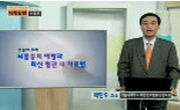Purpose: The purpose of this study was to identify the factors affecting readmission in stroke patients. Methods: A retrospective study design was used. Participants were 3,675 adult cerebral stroke patients in the inpatient wards of the Department of...
http://chineseinput.net/에서 pinyin(병음)방식으로 중국어를 변환할 수 있습니다.
변환된 중국어를 복사하여 사용하시면 됩니다.
- 中文 을 입력하시려면 zhongwen을 입력하시고 space를누르시면됩니다.
- 北京 을 입력하시려면 beijing을 입력하시고 space를 누르시면 됩니다.

뇌졸중 환자의 퇴원 후 재입원에 영향을 미치는 요인: 후향적 연구 = Factors Affecting Readmission After Discharge in Stroke Patients: A Retrospective Study
한글로보기https://www.riss.kr/link?id=A108361493
- 저자
- 발행기관
- 학술지명
- 권호사항
-
발행연도
2022
-
작성언어
-
-
주제어
뇌졸중 ; 퇴원 ; 재입원 ; Stroke ; Patient Discharge ; Patient Readmission
-
KDC
517
-
등재정보
KCI등재
-
자료형태
학술저널
- 발행기관 URL
-
수록면
262-271(10쪽)
- DOI식별코드
- 제공처
- 소장기관
-
0
상세조회 -
0
다운로드
부가정보
다국어 초록 (Multilingual Abstract)
Purpose: The purpose of this study was to identify the factors affecting readmission in stroke patients. Methods: A retrospective study design was used. Participants were 3,675 adult cerebral stroke patients in the inpatient wards of the Department of Neurology and Neurosurgery of G University Hospital located in C city. Data were collected from January 1, 2016 to December 31, 2021 and data were analyzed using χ2 test, independent t-test, and multivariate logistic regression with SPSS/WIN 24.0. Results: After discharge for stroke, the readmission rate was 23.7%, and the mortality rate was 0.3%. The variables with significant differences between the readmission group and non-readmission group were age, type of stroke, surgery, ICU treatment, mRS score, blood pressure, diabetes, and heart disease. Factors influencing an readmission in stroke patients were Age 65-74 (OR 1.30, 95% CI=1.03-1.64), ≥75 (OR 1.28, 95% CI=1.02-1.62), mRS score 2points (OR 2.50, 95% CI=1.99-3.13), HTN status (OR 1.26, 95% CI=1.07-1.50), CVD status (OR 1.38, 95% CI=1.01-1.90), TC (OR 1.60, 95% CI=1.05-2.44). Conclusion: To lower the readmission rate of stroke patients, it is essential to control lifestyle, including whether or not to take treatment drugs, after diagnosing risk factors such as high blood pressure, diabetes, and heart disease, hyperlipidemia. Nursing interventions that can provide information on risk factor management and coping strategies are urgently needed as symptoms change. In addition, research is needed to develop and implement an intervention strategy that can improve the function of stroke patients as much as possible at home or in society so that they can lead an independent life without the help of others, and verify their effectiveness.
동일학술지(권/호) 다른 논문
-
- 한국기초간호학회
- Cho
- 2022
- KCI등재
-
- 한국기초간호학회
- Yuan
- 2022
- KCI등재
-
- 한국기초간호학회
- Chae
- 2022
- KCI등재
-
간이식 환자의 퇴원 준비도와 자가간호와의 관계: 종단적 연구
- 한국기초간호학회
- 박선복(SunBok Park)
- 2022
- KCI등재




 ScienceON
ScienceON 스콜라
스콜라





